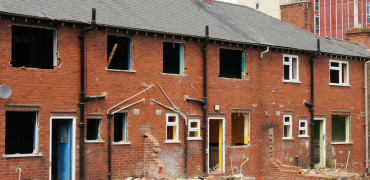Did you know, the average adult breathes in almost 4,000 gallons of air every day?
Indoor air can also be up to five times as polluted as outdoor air.
At this time of year, damp and mould is a real problem in poor quality properties.
With so many people stuck inside, are we creating a ‘perfect storm’ for poor health?
It may sound dramatic, but for many, getting this right is a matter of life and death
The importance of indoor air quality
In a previous article for ‘The Hub’ I mentioned that the average British person spends 22 hours a day inside… or around 90% of their overall day.
Unfortunately, this is also true of our children too; 36% of parents think their kids are not spending enough time outside, whilst 1 in 6 are uncertain themselves of how much time outdoors is actually sufficient, according to various studies.
With all this time being spent indoors, it’s easy to think we are protected from the various coughs, colds and illnesses typically associated with prolonged exposure to adverse weather.
We don’t tend to think about the harmful gases, chemicals and toxins that we breathe in unknowingly whilst inside throughout the course of any given day.
Yet these pollutants are to blame for many of the migraines, skin and eye irritations, allergic reactions and general tiredness that we all suffer from, from time to time.
More than just an irritant
Poor IAQ (Indoor Air Quality) is responsible for around 40,000 deaths throughout Britain each year. On average, 3 people a day die from asthma.
There are 5.4 million people (1.1 million children and 4.3 million adults) in Great Britain known to be suffering from the condition… and they are just the ones that came forward for treatment. An untold number battle through their symptoms undiagnosed.
This isn’t just a British problem either; 84 million Europeans live in damp or mouldy dwellings, which increases their risk of having respiratory diseases and life-long allergies by 40%.
This proves the number of people living in unhealthy buildings remains an issue, despite recent awareness of the correlation between indoor environment and human health.
Preventative measures
So what can we do about it?
Well, the good news is, we have the technology! The development of respiratory illnesses as a result of damp buildings can be reduced, and it is now clearer than ever that the legal framework for buildings needs to support healthy indoor climates in new and existing buildings.
You may have already come across devices aimed at improving IAQ, such as ventilation systems, but for those who haven’t, allow me to explain how they work:
MVHR (Mechanical Ventilation with Heat Recovery) provides fresh filtered air into a building whilst retaining most of the energy that has already been used in heating the building.
Heat Recovery Ventilation is the solution to the ventilation needs of energy efficient buildings.
MVHR, heat recovery ventilation (HRV) or comfort ventilation are essentially all names for the same thing.
A heat recovery ventilation system properly fitted into a house provides a constant supply of fresh filtered air, maintaining the air quality whilst being practically imperceptible.
An airtight building with effective filtration and ventilation is proven to reduce particle penetration by 78%.
Retrofitting MVHR is also possible on a room by room basis, meaning it doesn’t have to cost the earth and, when working with sustainable heating, such as air source heat pumps, the cold and damp internal conditions can become a thing of the past.
In summary
Most of the housing sector is now in agreement that the only tangible long-term sustainable solution for alleviating fuel poverty would be to establish a properly funded programme to insulate all affected homes and ensure an efficient and up-to-date heating system is installed.
Of course, guaranteeing this outcome would require significant investment – estimated at about £1.7 billion per annum over 15 years.
Although such significant investment seems unfeasible, one must consider how fuel poverty can severely affect people’s health because homes are often under-heated.
Fuel poverty puts enormous pressure on hospitals and GP surgeries across the country.
This is not only because of the physical and mental impact of living in a cold home, but also because it can actually extend the period of time a vulnerable patient is kept in hospital, with some actually not being discharged until their home is renovated to habitable state once again.
The impact is estimated to burden the NHS with costs of £1.36 billion per annum. It is also a known contributor to the 25,000 excess winter deaths per year in England and Wales.
Poor indoor air pollution is a danger to everyone. It may sound dramatic, but do your research and you’ll quickly see that for many, getting this right is a matter of life and death.
Joe Bradbury is editor of Housing Association



